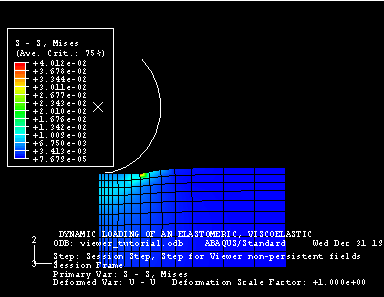
I get this error Message getInputs cannot be used with the -noGUI option.Īlso, I have tried running it using the below command as well. I have used "noGUI" instead of script, but Also, I have tried it as a batch file to run it in the command prompt.īatch Command : "C:\SIMULIA\Abaqus\6.14-3\code\bin\abq6143.exe" cae script =C:\Users\Me\Desktop\Sample.py %* I want it as a file, which will run the other desired script on a single-click. I know we can run it from File->RunScript or in the CLI with an Abaqus Command. To track the usage of the few python scripts, I am doing this.
#Abaqus scripting reference manual code
However, the code works only in ABAQUS PDE (Similar to VBA editor in Excel) This python script will call another python script, which is the requirement.Įxecfile('C:\\\\Users\\\\Me\\\\Desktop\\\\Sample.py')""") - This also works Let me know if you'd be interested in learning more about HEEDS.I want to convert a python script to an executable file. Additionally, if you're interested in performing optimization now that you've got the tools for automation, my company's design optimization software, HEEDS, has the most advanced technology available for that purpose.
#Abaqus scripting reference manual manuals
The Abaqus manuals have a lot more information on the specific commands I've referenced here. If you would like to get output in an automated fashion, see this comment: You can then execute the analysis with the following command: This will generate a new *.inp file with the parameter values changed. The following command will execute the python script: Start from a working directory that contains your python script and your CAE database. To execute the script, you will need to use the command line. Then you can find the parameter values you changed in CAE, and you can modify them directly. Rename it to something else, but with a py extension (for example, script.py). Then, find the abaqus.rpy file (it is saved in the working directory, so that depends on how you start CAE). Save model (or Save As, depending on your situation). From Jobs, "Write Input" for the job associated with this model.ħ. Remesh any parts which have changed geometry.Ħ. Move to Assembly module (will regenerate Assembly).ĥ. It doesn't matter what you change them to, just that you make a change to the value.Ĥ. Change parameters of interest (shell thickness, composite orientations/thicknesses, geometric values). Open model database which contains fully built model.ģ. Then you will need to find the abaqus.rpy file you generated from that session, and it can be used for automation.Ģ. So you just need to open Abaqus/CAE, perform exactly (and only) the steps you would like automated, and then close CAE. This is named abaqus.rpy (past files will be renamed at startup to abaqus.rpy.1. One great thing about Abaqus/CAE is that it automatically saves every action you perform into a python script.



To do automated parametric modeling in Abaqus/CAE you will need to do some basic scripting. I responded by email to you, but I also wanted to post my response here in case others might find it useful.


 0 kommentar(er)
0 kommentar(er)
